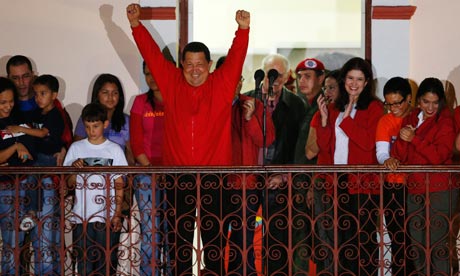Jaithirth Rao in The Print
 Representational image | A church in Tamenglong, Manipur | Simrin Sirur | ThePrint
Representational image | A church in Tamenglong, Manipur | Simrin Sirur | ThePrint
The purpose of this article is not to go into the tragic circumstances around the recent death of Father Stan Swamy. While many columns have been written about the tribal rights activist, including one by retired IPS officer Julio Ribeiro in ThePrint, I believe an attempt should be made to look at the larger issues surrounding the Roman Catholic Church and the Jesuit order in the context of their extensive and intensive engagement with Adivasi communities in India.
Christian missionaries and schools are generally viewed positively by Indian society. In most Bollywood movies, the Christian (usually Catholic) padre is portrayed as a benign, helpful and healing figure. I certainly hope the image stays that way, and is not altered or tarnished. For that, it is important to examine the political ideology of Christian/Catholic Marxism.
It is a common belief in India that the Roman Catholic Church in general and the Jesuit order in particular are anti-Marxist. This belief is quite wrong. The so-called ‘liberation theology’ is very much a Roman Catholic product, absent from most Protestant Christian theological outpourings. Liberation theology is profoundly anti-capitalist, anti-markets and justifies violence, using selective quotations from the gospels. They like to talk about the reference in the gospels to Jesus throwing out money-changers from the temple; there is little if any reference to the parable of talents. The leading lights of liberation theology have been Latin American Jesuits who are completely opposed to a conservative strain in philosophical, theological and political matters. The influence of the Marxist Latin American liberation theologists has deeply permeated the Roman Church in India and has impacted the Jesuit order quite profoundly over the last few decades.
It is this ideological orientation among Jesuits that leads to many of them being well-disposed to Maoist insurgents, while publicly donning the robes of supporters, helpers and padrones of the supposedly helpless tribal people. This is pretty much what Catholic Marxists have endorsed in Central and South America also and is a classic “practice” of liberation theology.
In contrast with peaceful theology
My father and I both have been products of a leading Jesuit college in south India. I am personally a significant supporter of my alma mater. Every time I interact with older, kinder, more sober, more sensible Jesuits, they find it difficult to let their guard down. But directly or indirectly, they admit to me their frustration with the fact that the loudest and most active elements in their order today are Marxists. These Marxist Jesuits reject the earlier accommodative position of the Church and the order. They have also enthusiastically embraced ‘cultural Marxism,’ which in the West attacks white male dominance and in India has chosen to attack Hindu male dominance.
It is a part of liberation theology that such dominance cannot be addressed within peaceful, constitutional, parliamentary channels. A violent, revolutionary change is, therefore, considered necessary and desirable. They want to overthrow Indian society and specifically Hindu society, which, in the vocabulary of cultural Marxism, is seen as hegemonic, patriarchal, misogynistic, and casteist — a society that the Marxist Jesuits cannot and will not come to a peaceful engagement with. This is in complete contrast with the Jesuits of my college days who respected Hindu traditions and were votaries of an empathetic society.
Unfortunately, too many of today’s Roman Catholic and Jesuit priests take their inspiration not from Roberto de Nobili (a Sanskrit and Tamil scholar), Thomas Stephens (a Marathi scholar), Costanzo Giuseppe Beschi (a Tamil scholar) and Anthony de Mello (a scholar of Vedanta, Buddhism and Sufism) but from Gustavo Gutierrez and Jon Sobrino (radical, even revolutionary Latin American Catholic scholars).
Cardinal Joseph Ratzinger, who served as Pope Benedict XVI, was usually stuck between a rock and a hard place while heading the Vatican’s doctrinal office. He had to condemn de Mello’s fondness for Vedanta, Buddhism and Sufism as theologically not quite proper. At the same time, he had to emphatically oppose Gutierrez’ attempt to plant revolutionary Marxism into Catholic dogma. As early as 1984, Ratzinger’s office published a critical analysis where it was specifically mentioned that “Marxism and Catholic Theology are incompatible.” From my perspective, Ratzinger would have been better off supporting de Mello, who, after all, was engaging with traditions infused with the sacred and the spiritual, something that the founder of Christianity would have approved of.
Non-Christian double-talk
Only the most convoluted arguments can stretch the message of the Christian gospels to support violent materialism. Theologians like Gutierrez and Sobrino are looking for an alternative to market capitalism and reject the position that this economic system has in fact done the best job with respect to poverty reduction. They call for a dismantling of the “bourgeois State,” an old Marxist demand. Their influence extends well beyond Latin America and has found fertile soil in India. Marxist Catholic priests in India are no longer happy looking to the spiritual needs of their kinfolk and focusing on old-fashioned parish work. Instead, they want to move away from their home states and turn up in Tribal tracts, in order to work on the political consciousness of the people there and guide them towards the new Christian theology that resembles revolutionary Marxism, while emphasising some sentences from the gospels and ignoring others.
The idea that the Indian bourgeois State is an oppressor of tribals and that it needs radical transformation is frequently interspersed with positive references to the Indian Constitution. This kind of double-talk is taken straight from the tenets of Joseph Stalin and Mao Zedong and in its lack of respect for veracity, it is distinctly non-Christian. The ideas derived from more recent theories of cultural Marxism are even more aggressive and puzzling. These theories posit the existence of an endless irreconcilable set of contradictions between Hindu society and the tribals. Of course, these scholars do not bother to address that if there actually exists a chasm between Hindus and tribals, why would there not be a greater chasm between Indian tribals and Christianity, admittedly now channelled via a 19th century German philosopher?
Srisailam, Srikalahasti, Puri, Pandharpur, Jejuri, Dharmasthala, Dantewada, Sabarimala and so many other Hindu pilgrimage centres are intertwined with Adivasi traditions. Within the broad Indic tent, there seems to be more engagement, proximity and, may I suggest, unity in diversity. But, of course this narrative is anathema to cultural Marxists. They have to posit the existence of a wicked Hindu, male, hegemonic order that should be overthrown in the revolution that is just around the corner. In the meantime, at a minimum, it is important to keep the Adivasis worked up with real and imaginary grievances and challenging the Indian State as well as Hindu society.
Need for introspection
The Roman Catholic and Jesuit involvement with India’s tribal population is not a religious or spiritual one. It has, under the influence of Gutierrez and Sobrino, turned into a political one. Oddly enough, the tribals are denied subjective agency. They “require” the help of outside Marxist ideologues and we need to question if this so-called help is in fact a euphemism for manipulation. To manipulate tribals and set them up against a powerful State and against immediate neighbours may end up being the most cynical, sordid and dangerous of approaches.
As an external admirer of conservative traditions in the Catholic Church (the Latin Mass and Gregorian chants come to mind), I am deeply disturbed that a new generation of Marxist Catholics are willing to put at risk centuries of peaceful and cordial engagement between Indian society and Christianity of the Chaldean, Syriac, Roman or Anglican varieties. Opposing the Indian State and declaring war on Hindu society are, at a minimum, not smart. This of course certainly does not answer how Christianity, one of the most spiritually informed religious traditions of the world, can make friends with a violent, atheist, materialist cult.
I have already made a passing reference to my personal connections. Let me add. My brother is a product of a Christian Brothers school; my sister of Loretto and Presentation Convent schools. I am a strong supporter of my old Jesuit college. It is with great sadness and acute concern, therefore, that I view the unnecessary and destructive Marxist orientation of so many Roman Catholic priests, especially members of the Jesuit order.
I call for some serious introspection among my Indian Catholic friends. It is they who can best grapple with this thorny issue. Any non-Catholic speaking up will be accused of being non-secular and bigoted. Lay Catholics indulging in self-examination and confronting the imported Marxist rhetoric among their clergy are best placed to re-introduce spirituality and mutual accommodation into their faith and ensure that the forays into the political and materialistic spheres do not take a destructive turn.
 Representational image | A church in Tamenglong, Manipur | Simrin Sirur | ThePrint
Representational image | A church in Tamenglong, Manipur | Simrin Sirur | ThePrintThe purpose of this article is not to go into the tragic circumstances around the recent death of Father Stan Swamy. While many columns have been written about the tribal rights activist, including one by retired IPS officer Julio Ribeiro in ThePrint, I believe an attempt should be made to look at the larger issues surrounding the Roman Catholic Church and the Jesuit order in the context of their extensive and intensive engagement with Adivasi communities in India.
Christian missionaries and schools are generally viewed positively by Indian society. In most Bollywood movies, the Christian (usually Catholic) padre is portrayed as a benign, helpful and healing figure. I certainly hope the image stays that way, and is not altered or tarnished. For that, it is important to examine the political ideology of Christian/Catholic Marxism.
It is a common belief in India that the Roman Catholic Church in general and the Jesuit order in particular are anti-Marxist. This belief is quite wrong. The so-called ‘liberation theology’ is very much a Roman Catholic product, absent from most Protestant Christian theological outpourings. Liberation theology is profoundly anti-capitalist, anti-markets and justifies violence, using selective quotations from the gospels. They like to talk about the reference in the gospels to Jesus throwing out money-changers from the temple; there is little if any reference to the parable of talents. The leading lights of liberation theology have been Latin American Jesuits who are completely opposed to a conservative strain in philosophical, theological and political matters. The influence of the Marxist Latin American liberation theologists has deeply permeated the Roman Church in India and has impacted the Jesuit order quite profoundly over the last few decades.
It is this ideological orientation among Jesuits that leads to many of them being well-disposed to Maoist insurgents, while publicly donning the robes of supporters, helpers and padrones of the supposedly helpless tribal people. This is pretty much what Catholic Marxists have endorsed in Central and South America also and is a classic “practice” of liberation theology.
In contrast with peaceful theology
My father and I both have been products of a leading Jesuit college in south India. I am personally a significant supporter of my alma mater. Every time I interact with older, kinder, more sober, more sensible Jesuits, they find it difficult to let their guard down. But directly or indirectly, they admit to me their frustration with the fact that the loudest and most active elements in their order today are Marxists. These Marxist Jesuits reject the earlier accommodative position of the Church and the order. They have also enthusiastically embraced ‘cultural Marxism,’ which in the West attacks white male dominance and in India has chosen to attack Hindu male dominance.
It is a part of liberation theology that such dominance cannot be addressed within peaceful, constitutional, parliamentary channels. A violent, revolutionary change is, therefore, considered necessary and desirable. They want to overthrow Indian society and specifically Hindu society, which, in the vocabulary of cultural Marxism, is seen as hegemonic, patriarchal, misogynistic, and casteist — a society that the Marxist Jesuits cannot and will not come to a peaceful engagement with. This is in complete contrast with the Jesuits of my college days who respected Hindu traditions and were votaries of an empathetic society.
Unfortunately, too many of today’s Roman Catholic and Jesuit priests take their inspiration not from Roberto de Nobili (a Sanskrit and Tamil scholar), Thomas Stephens (a Marathi scholar), Costanzo Giuseppe Beschi (a Tamil scholar) and Anthony de Mello (a scholar of Vedanta, Buddhism and Sufism) but from Gustavo Gutierrez and Jon Sobrino (radical, even revolutionary Latin American Catholic scholars).
Cardinal Joseph Ratzinger, who served as Pope Benedict XVI, was usually stuck between a rock and a hard place while heading the Vatican’s doctrinal office. He had to condemn de Mello’s fondness for Vedanta, Buddhism and Sufism as theologically not quite proper. At the same time, he had to emphatically oppose Gutierrez’ attempt to plant revolutionary Marxism into Catholic dogma. As early as 1984, Ratzinger’s office published a critical analysis where it was specifically mentioned that “Marxism and Catholic Theology are incompatible.” From my perspective, Ratzinger would have been better off supporting de Mello, who, after all, was engaging with traditions infused with the sacred and the spiritual, something that the founder of Christianity would have approved of.
Non-Christian double-talk
Only the most convoluted arguments can stretch the message of the Christian gospels to support violent materialism. Theologians like Gutierrez and Sobrino are looking for an alternative to market capitalism and reject the position that this economic system has in fact done the best job with respect to poverty reduction. They call for a dismantling of the “bourgeois State,” an old Marxist demand. Their influence extends well beyond Latin America and has found fertile soil in India. Marxist Catholic priests in India are no longer happy looking to the spiritual needs of their kinfolk and focusing on old-fashioned parish work. Instead, they want to move away from their home states and turn up in Tribal tracts, in order to work on the political consciousness of the people there and guide them towards the new Christian theology that resembles revolutionary Marxism, while emphasising some sentences from the gospels and ignoring others.
The idea that the Indian bourgeois State is an oppressor of tribals and that it needs radical transformation is frequently interspersed with positive references to the Indian Constitution. This kind of double-talk is taken straight from the tenets of Joseph Stalin and Mao Zedong and in its lack of respect for veracity, it is distinctly non-Christian. The ideas derived from more recent theories of cultural Marxism are even more aggressive and puzzling. These theories posit the existence of an endless irreconcilable set of contradictions between Hindu society and the tribals. Of course, these scholars do not bother to address that if there actually exists a chasm between Hindus and tribals, why would there not be a greater chasm between Indian tribals and Christianity, admittedly now channelled via a 19th century German philosopher?
Srisailam, Srikalahasti, Puri, Pandharpur, Jejuri, Dharmasthala, Dantewada, Sabarimala and so many other Hindu pilgrimage centres are intertwined with Adivasi traditions. Within the broad Indic tent, there seems to be more engagement, proximity and, may I suggest, unity in diversity. But, of course this narrative is anathema to cultural Marxists. They have to posit the existence of a wicked Hindu, male, hegemonic order that should be overthrown in the revolution that is just around the corner. In the meantime, at a minimum, it is important to keep the Adivasis worked up with real and imaginary grievances and challenging the Indian State as well as Hindu society.
Need for introspection
The Roman Catholic and Jesuit involvement with India’s tribal population is not a religious or spiritual one. It has, under the influence of Gutierrez and Sobrino, turned into a political one. Oddly enough, the tribals are denied subjective agency. They “require” the help of outside Marxist ideologues and we need to question if this so-called help is in fact a euphemism for manipulation. To manipulate tribals and set them up against a powerful State and against immediate neighbours may end up being the most cynical, sordid and dangerous of approaches.
As an external admirer of conservative traditions in the Catholic Church (the Latin Mass and Gregorian chants come to mind), I am deeply disturbed that a new generation of Marxist Catholics are willing to put at risk centuries of peaceful and cordial engagement between Indian society and Christianity of the Chaldean, Syriac, Roman or Anglican varieties. Opposing the Indian State and declaring war on Hindu society are, at a minimum, not smart. This of course certainly does not answer how Christianity, one of the most spiritually informed religious traditions of the world, can make friends with a violent, atheist, materialist cult.
I have already made a passing reference to my personal connections. Let me add. My brother is a product of a Christian Brothers school; my sister of Loretto and Presentation Convent schools. I am a strong supporter of my old Jesuit college. It is with great sadness and acute concern, therefore, that I view the unnecessary and destructive Marxist orientation of so many Roman Catholic priests, especially members of the Jesuit order.
I call for some serious introspection among my Indian Catholic friends. It is they who can best grapple with this thorny issue. Any non-Catholic speaking up will be accused of being non-secular and bigoted. Lay Catholics indulging in self-examination and confronting the imported Marxist rhetoric among their clergy are best placed to re-introduce spirituality and mutual accommodation into their faith and ensure that the forays into the political and materialistic spheres do not take a destructive turn.

